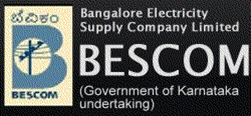HOT TOPICS
SPOTLIGHT AGENCIES
Alternatives to Road-Widening
Written By pdk - 14 July, 2010
Bangalore Analysis Transportation Road-widening
This post is in response to criticism that road-widening critics haven't provided alternatives to widening.
Two things.
1. Sorry for the extreme illustration, but suppose I find someone committing a murder. I'm not sure that I have to provide an alternative to him and only then try to stop him.
2. I think the people mentioned above have suggested various alternatives. The 'people' say that the problem is a unsustainable number of private vehicles on our roads. Following from that, they have likened road-widening to 'loosening the belt to cure obesity' and recognised that it is a unworkable response to traffic congestion. They have provided following alternatives to resolving traffic congestion. None of these may help by itself. But some combination of them should be tried. The list has been made from the following sources:
The list is below. I don't agree with some of them, but 'people' have suggested them:
- CyBaNa - Cycling, Bussing, and Nadiyodu - encourage these
- Equitable allocation of road space. Remove parking space from congested roads. Use parking space in commercial, industrial, residential buildings
- Streamline traffic movement - synchronized/co-ordinated traffic signals
- Pedestrian and cycle friendly roads
- Reduce private vehicles on the roads - congestion tax - restricted registration of vehicles - odd/even registration number days for private vehicles - reduced parking on roads and so on
- Improve public transport - make it convenient, reliable, and affordable. BMTC already carries 4 million people per day
- Champion public transport - bring it to the foreground in debates on transport. Make people understand the effects of their choice of travel mode. Enhance share of public transport & reduce share or private vehicles in travel
- Explore a BRT-type transit system. It may not be possible to have a full-fledged BRT system, but even something like dedicated lanes/priority lanes can be explored where a BRT is not feasible
- Explore and implement alternate options such as flyovers, underpasses, magic boxes
- Ensure on-time completion of Metro/Mono/LRT/BRT. Consider the effect of these projects while deciding on widening [I disagree with this point. The Metro will certainly fail to ease traffic congestion as Das's presentation above 'Yaara Metro?' lucidly explains. Do we go on the next wild goose chase then - road-widening?]
- Provide cycling tracks and pedestrian-friendly footpaths
- Avoid vertical growth
- Some roads may still have to be widened - but this should be done only after consultations with affected communities & their sign-off
- Leave. This is what an urban planner, George Kuruvila, did as he explained at the Save Bangalore Committee's Convention on road-widening.
COMMENTS

The Metro will certainly fail to ease traffic congestion as Das's presentation above 'Yaara Metro?' lucidly explains
It is far from lucid. Bangkok is quoted as an example its metro is only 20 kms with 18 stations compared to Londons 400 kms with 268 stations for the 1500sq km area they both serve. Obviously they will have to rely on the bus and the cars which are always filled to capacity.
Londons underground has been in existence since 1863 and we want to have our metro solve the problem in 5 years? Metro & train systems are an investment for our future. I am sure with this patience level the writer could have claimed the bori bunder to thane train in 1853 could not have served Indias needs. Poor visibility into what train systems can do to a country.
As regards the comparisions made with Singapore, both cities are roughly the same size in terms of area and population yet while Bangalore has around 1500kms of roads Singapore has double.
Very clearly as stated in the ppt poor accessibility is what is dogging the metro because integrated planning is an alien concept. Even the ppt seems to pitch either metro or bus instead of metro and bus and tram trains and others. Feeder systems and multimodal transport are not contemplated and metro is being looked at in isolation as if it was expected to reach every door step.Train systems run on corridors and create density along those so the other areas can be utilized for greening and open spaces.

idontspam - 27 July, 2010 - 09:27
A combination of improving bus service and restricting private vehicles may be a good option for Bangalore. Why choose multi-modal just for its own sake?
Simple, train covers longer distances in a shorter time, carries more people per trip than any bus can. Can a bus carry 2000 people in a single trip from Byappanahalli to Peenya in 30 mins? Metro can. End of case. Why do we have Air travel & Interstate trains? Why dont we disband all that and only use a maharajah bus service from Kashmir to Kanyakumari?
If Singapore relied only on Bus they would be in deep swampy morass by now. These systems complement each other. There is no bus service from Jurong to Pasir Ris which can do that distance in the same time and carry the same volume that SMRT can, that too thru Raffles place in the center of the city.
Overhead or underground for metro is a simple cost issue+expertise issue. We have enough guys who can quickly put up an overhead structure. Considering we needed to get started quickly I think it is a good move. Let our guys dig one segment and get their hands wet. Like overhead road building which has got commoditised thanks to NHAI, the expertise for underground digging has to evolve. Local expertise needs to be built, engineering gaints need to find a market to build TBM's in india. Metro guys had a tough time finding people who could get this done. Right now it is fancy and expensive. Make your case for underground and convince govt to put the money on it, I am with you. You will be helping create expertise & ecosystem. I would even like corridor roads to go underground leaving the surface to peds/greenery

Force People to use PT to get better Metro Utilization
Vasanth - 27 July, 2010 - 16:13
Instead of widening the roads which is solely for more and more big cars and MUVs adding to our city, control the usage and purchase. Purchase is one time investment and people do not worry shelling out more. Control the usage by congestion pricing especially for SUVs, MUVs and Big Cars which people ride more for fancy than just commute. People complain safety issues of small cars, but in the snail pace traffic, what is the safety issue?
Congestion pricing and parking fees as well as I said earlier even in companies to park the vehicles within company campus. Make the usage expensive.
People should use PT. This way no need for road widening, Metro usage as well as our baby Namma Railu's usage will increase making the Govt. to invest further on these kind of infrastructure rather than senseless road widening and flyovers which just shift the bottleneck without having any impact on our environment by reducing the emission. We just heard the statment from our Transport minister for buying 4,000 more buses based on the feedback of Busday. This is a clear example.
We may get even more swanky and non/minimum stop buses with dedicated lanes, A/C locals (Namma Railu) etc. Otherwise Govt. will think twice to invest on PT infrastructure doubting its usage. Govt. should come out of the confusion of wide roads or effective PT and concentrate solely on PT.
Coming to the Bus vs Metro, I think buses are more sustainable transport compared to Metro, but it needs dedicated lanes and high discipline to reach near the speeds of the Metro which may not be possible in Indian conditions.For that we may need expressways with bus lanes running across the city. Still it may not be able to achieve the speeds of Metro and green gas emissions will still persist. Metro is inevitable.

Interstate trains, cost, expertise
pdk - 28 July, 2010 - 13:48
A single bus may not be able to take 2000 people from Byappanahalli to Peenya in 30 minutes (even Metro would take longer according to Das's calculations it think). Maybe a few buses running on dedicated/priority lines may be able to take more people than a single bus (though not 2000), in a shorter time than present. And do 2000 people really want to go from Byappanahalli to Peenya in 30 minutes (it would take longer) every few minutes? I don't know. Interstate trains are all very well, but maybe that is where they should be, not in cities. At least, not in this form.
Cost of going underground: around Rs 4,700 crores extra is what as projected as the extra cost for an an all-underground metro. Now, that would be a drop in the ocean, considering the cost escalations that have happened already. From Rs 6500 crores to Rs 11000 crores as of now. As I mentioned, money seems to be no bar, so one can't raise that as an argument against the Metro.
As for local expertise, 35 KM of underground metro have been already been completed in Delhi in November 2009 for Phase II. So where is the question of local expertise not being available? In any case, I'm sure underground metro construction is commoditized outside India - why can't one get expertise from there? We are after all building a city and not giving training to our engineering giants.

idontspam - 14 July, 2010 - 11:07
Wide roads which can carry mass transit like tram-trains should be laid such that they are accessible 500 meters from most dwellings surrounding. This will ensure the rest of the area is allowed for other activities and most people need to come to the main wide road, which is always within reach, for their transport/shopping needs. This is one mixed use model that has worked very well for this community. See Booklet & Map for more details.
Implementation of this wide roads is possible in such a way that the people who gave up their property can continue to live on the same area and take advantage of the wide road they helped create. Unfortunately people would rather take the money and scoot because they know BBMP will make a mess of it. BBMP will make it end to end asphalt with namesake footpath and then they will make it signal free then there will be more jams. No architect will be involved to understand the area and design it accordingly since intelligent inputs is an insult to the BBMP intelligence.
There is a misconception that narrow roads means sustainable. I have lived in these super narrow roads of bangalore and they are a pain in the backside. It is a screw up we are trying to fix painfully now. Most of our frustration today is horrible low quality execution. It isnt that sankey/bellary road between minsk & hebbal flyover isnt wide enough, but that it has bad lane management, inconsistent road geometry, bad pedestrian access, non existent bus lanes, ped xings, lighting, signage etc.
PRAJA.IN COMMENT GUIDELINES
Posting Guidelines apply for comments as well. No foul language, hate mongering or personal attacks. If criticizing third person or an authority, you must be fact based, as constructive as possible, and use gentle words. Avoid going off-topic no matter how nice your comment is. Moderators reserve the right to either edit or simply delete comments that don't meet these guidelines. If you are nice enough to realize you violated the guidelines, please save Moderators some time by editing and fixing yourself. Thanks!





